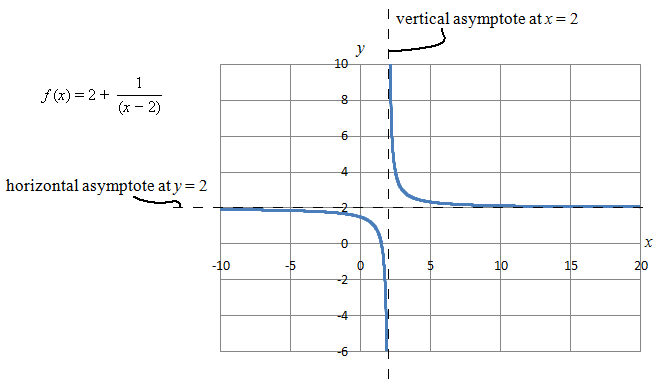If the graph of y = f (x) approaches a horizontal line y = L as x → ∞ or x → −∞, then the line y = L is called a horizontal asymptote. This is assuming that f (x) gets arbitrarily close to L as x → ∞. This occurs when:
f (x) → L as x → ∞ or f (x) → L as x → −∞
If the graph of y = f (x) approaches the vertical line x = K as x → K from one side or the other, that is, if:
y → ∞ or y → −∞ when x → K,
then the line x = K is called a vertical asymptote.
Example
As an example, the graph of:
has a horizontal asymptote at y = 2 and a vertical asymptote at x = 2.

